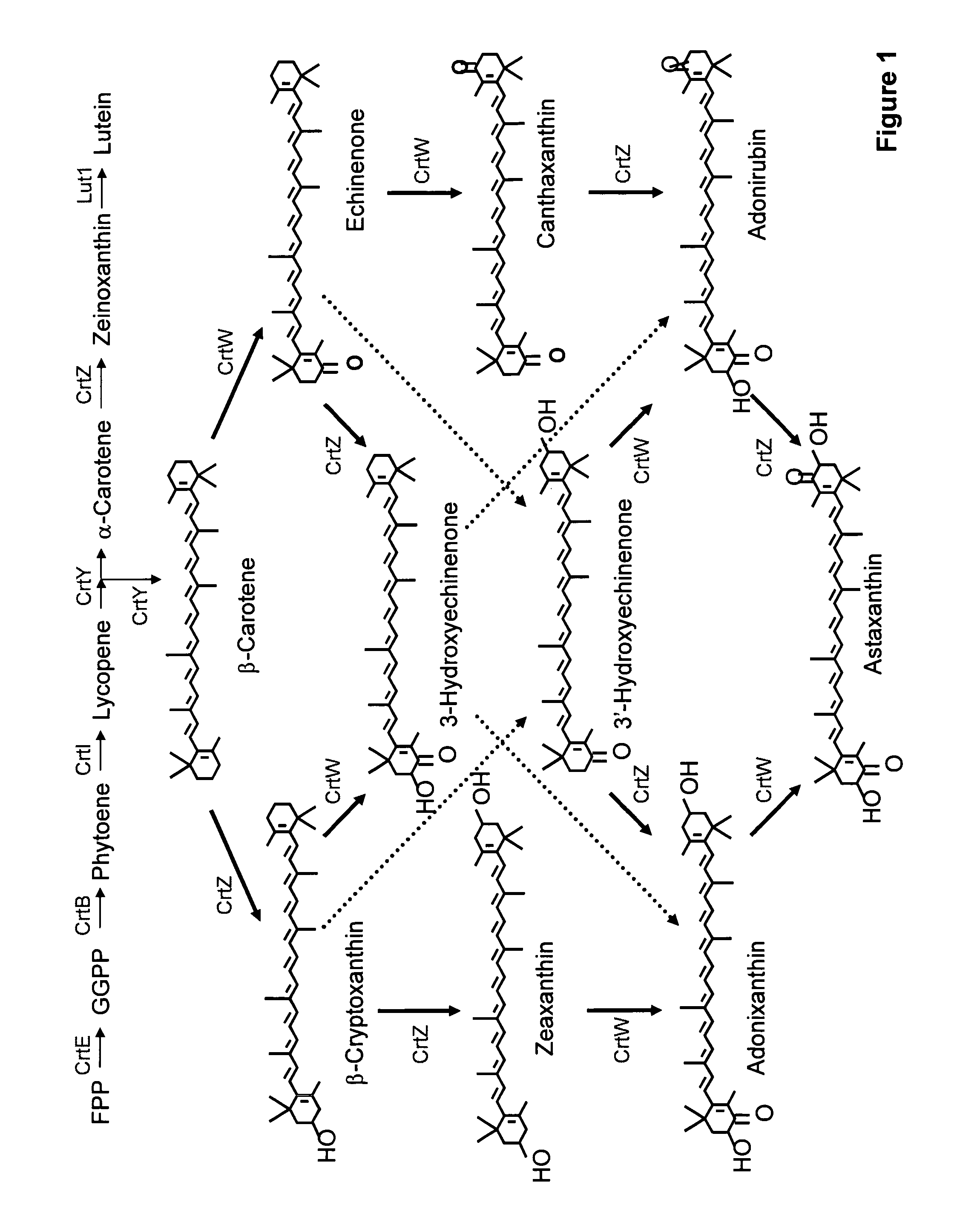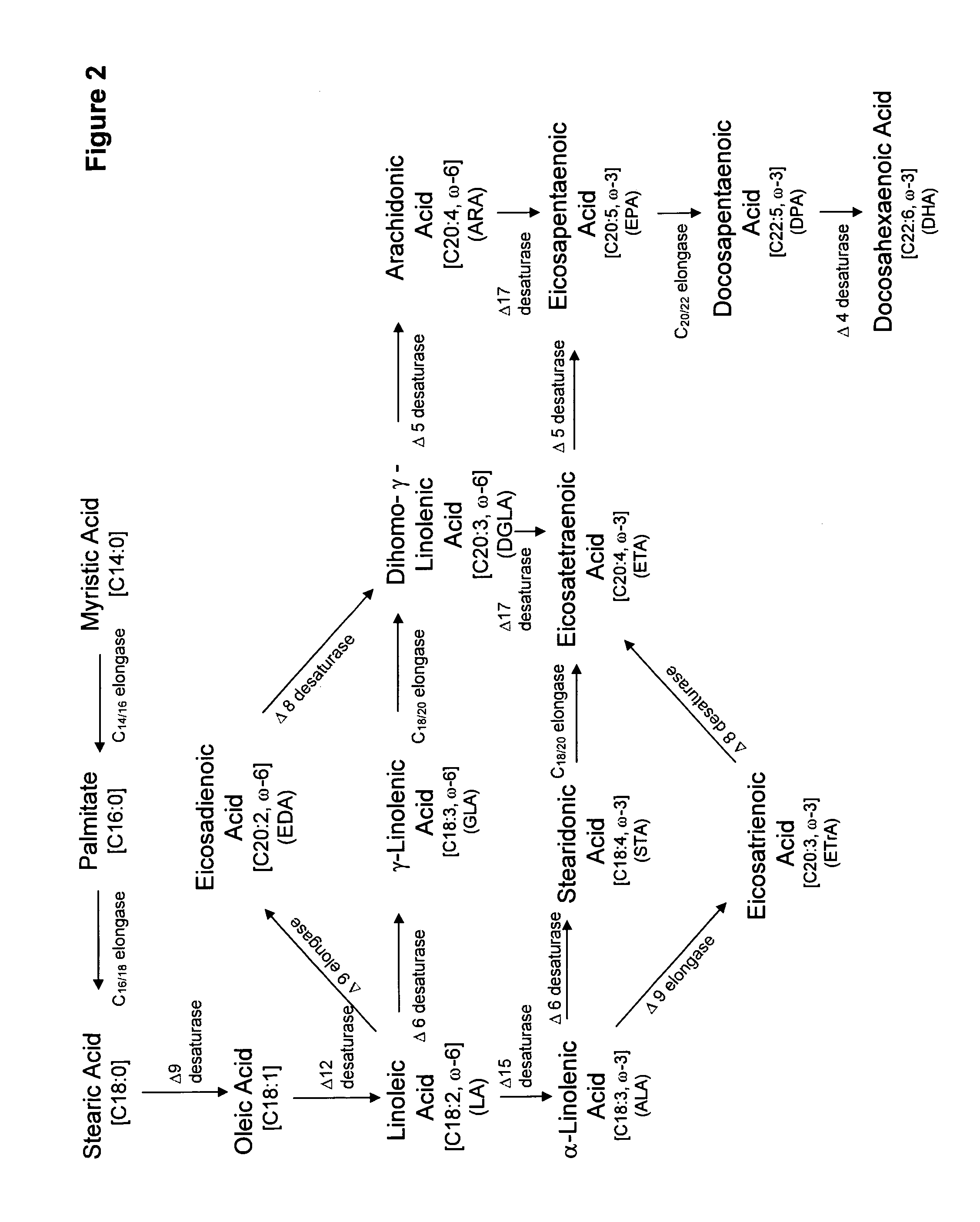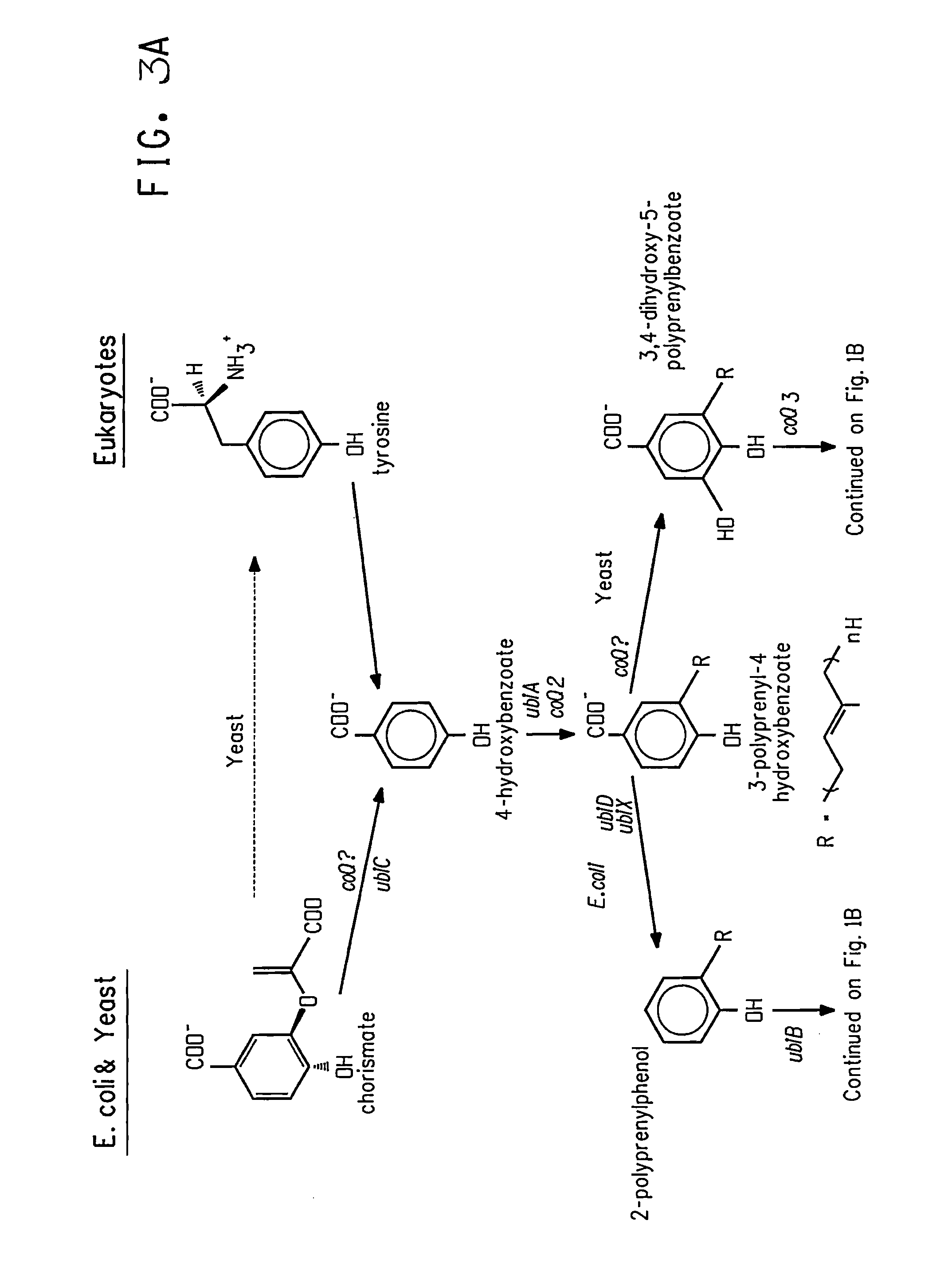Carotenoid production in a recombinant oleaginous yeast
a technology of oleaginous yeast and carotenoid, which is applied in the field of biotechnology, can solve the problems of high cost of utilizing the synthetically produced pigments, and and achieves the effect of relatively low productivity of carotenoid synthesis in these plants
- Summary
- Abstract
- Description
- Claims
- Application Information
AI Technical Summary
Problems solved by technology
Method used
Image
Examples
example 1
DNA Transformation in Yarrowia lipolytica
[0368]The following general procedure was used to make Yarrowia lipolytica chemically competent for DNA transformation (Chen, D. C. et al., Appl. Microbiol. Biotechnol., 48:232-235 (1997)).
[0369]Yarrowia cells were streaked on YPD medium plates 1 day prior to transformation. The cells were incubated at 30° C. Several large loopfuls (˜3) of cells from the YPD plate were resuspended in 1 mL of transformation medium [comprising 2.25 mL 50% PEG (average MW 3350); 0.125 mL 2 M lithium acetate pH 6.0; 0.125 mL 2 M dithiothreitol (DTT; prepared fresh prior to each use); and optionally 50 μL salmon sperm DNA (10 mg / mL)]. Approximately 100 μL of the Yarrowia cells suspended in the transformation medium were mixed with 100 to 500 ng of the desired plasmid (in linearized form when transforming integration plasmids). The cells were subsequently incubated at 39° C. for 1 hr and mixed using a Vortex mixer about every 15 min. After incubation, the cells we...
example 2
Construction of Yarrowia lipolytica Strain YL5, Producing Lycopene
[0370]The present Example describes the construction of lycopene-producing Yarrowia lipolytica strain YL5. This strain was prepared as a means to initially demonstrate the feasibility of C40 carotenoid biosynthesis in an oleaginous yeast.
[0371]After construction of integration vector pYCRTEBI (comprising crtE, crtB and crtI genes for lycopene synthesis) and transformation of the vector into Yarrowia lipolytica Y2224 (i.e., a Ura− derivative of Y. lipolytica ATCC#20362 [isolation described in Example 7]), lycopene production was characterized in resulting strain YL5 under growth and oleaginous conditions.
Construction of Integration Vector for Lycopene Biosynthesis
[0372]Production of lycopene requires crtE, crtB and crtI genes, which encode GGPP synthase (CrtE), phytoene synthase (CrtB) and phytoene desaturase (CrtI), respectively. The crtE, crtB and crtI genes from Pantoea stewartii DC413 (U.S. Pat. No. 7,288,387) were...
example 3
Synthesis of Yarrowia lipolytica Strains YCS1001-YCS1026, Producing Lycopene
[0388]The present Example describes the construction of lycopene-producing Yarrowia lipolytica strains YCS1001-YSC1026 (FIG. 8), by transformation and expression of plasmid pYCRTEBI (Example 2, supra) in Y. lipolytica strain Y2224 (i.e., a Ura− derivative of Y. lipolytica ATCC #20362 [isolation described in Example 7]). Strain YCS1002 served as the host strain in Example 5, infra, for creation of the YCS1200 series of carotenoid-producing Y. lipolytica transformants, while strain YCS1013 served as the host strain in Example 5, infra, for creation of the YCS1300 series of carotenoid-producing Y. lipolytica transformants.
[0389]Specifically, additional pigmented, lycopene-producing Y. lipolytica strains were generated by transforming plasmid pYCRTEBI into Y. lipolytica strain Y2224, according to the methodology of Example 1. Strain Y2224 was separately transformed with pYCRTEBI two times (i.e., the “first” or “...
PUM
| Property | Measurement | Unit |
|---|---|---|
| dry cell weight | aaaaa | aaaaa |
| pH | aaaaa | aaaaa |
| pH | aaaaa | aaaaa |
Abstract
Description
Claims
Application Information
 Login to view more
Login to view more - R&D Engineer
- R&D Manager
- IP Professional
- Industry Leading Data Capabilities
- Powerful AI technology
- Patent DNA Extraction
Browse by: Latest US Patents, China's latest patents, Technical Efficacy Thesaurus, Application Domain, Technology Topic.
© 2024 PatSnap. All rights reserved.Legal|Privacy policy|Modern Slavery Act Transparency Statement|Sitemap



